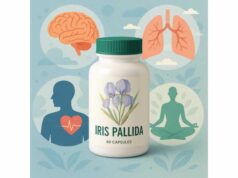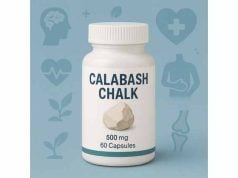Galbanum is a fragrant oleo-gum-resin obtained mainly from Ferula species native to Iran and neighboring regions. Distilled into a sharp, green essential oil or processed into a smooth balsamic resinoid, it has a long history in perfumery, incense, and traditional medicine. Today, people explore galbanum for its distinct aroma, skin-care potential when properly diluted, and its antimicrobial actions observed in laboratory studies. Emerging research also examines topical blends that include galbanum in clinical settings, though human evidence remains limited and often combined with other therapies. This guide explains what galbanum is, how it may work, practical ways to use it safely at home, sensible dosing ranges for topical and aromatic applications, who should avoid it, and where the science currently stands—so you can decide whether this botanical fits your goals without over-promising results.
Key Insights
- Aromatic use may support relaxation, while diluted topical use can aid fragrancing and cosmetic routines; lab studies suggest antimicrobial actions.
- Evidence in humans is preliminary and often combined with other methods; treat health claims cautiously.
- Typical adult topical dilution is 1–2% (10–20 mg/mL), up to 3–5% short term on small areas; avoid ingesting the essential oil.
- Avoid if pregnant in the first trimester, with uncontrolled asthma, known Ferula allergies, or in infants; consult a clinician for chronic conditions.
Table of Contents
- What is galbanum and how does it work?
- What benefits can you realistically expect?
- How to use galbanum safely at home
- How much galbanum per day?
- Common mistakes and troubleshooting
- Side effects and who should avoid it
- What the research says: quality and gaps
What is galbanum and how does it work?
Galbanum is an aromatic oleo-gum-resin exuded from cuts in the stems or roots of Ferula plants, especially Ferula gummosa and Ferula galbaniflua. The crude resin contains a blend of volatile terpenes (which become the essential oil when steam-distilled), resin acids and esters (which appear more prominently in the resinoid), and water-soluble gum polysaccharides. The essential oil is prized for a vivid “green,” slightly peppery, pine-balsamic scent that perfumers use to impart freshness to floral, chypre, and woody accords. The resinoid contributes smooth, balsamic, fixative depth.
From a chemistry perspective, galbanum essential oil typically features monoterpenes such as β-pinene, α-pinene, sabinene, myrcene, and limonene, sometimes with oxygenated terpenes in smaller amounts. These molecules evaporate readily (which you perceive as aroma) and can interact with odorant receptors in the nose to influence mood and perceived stress. In topical products, the oil’s lipophilic components can penetrate the stratum corneum; their local actions vary by constituent but often center on antimicrobial effects (in vitro) and modulation of skin feel and scent when used at low concentrations in creams, balms, or perfumes.
It helps to distinguish the forms you may encounter:
- Essential oil: A volatile, concentrated aromatic distillate. This is what most home users diffuse or dilute for skin fragrancing. It is not the same as a tincture or tea and should not be swallowed.
- Resinoid (or absolute): A solvent-extracted, viscous aromatic mass richer in heavy balsamic components. Preferred in perfumery and some anhydrous balms for fixative effects.
- Raw resin/tears: The unprocessed exudate, sometimes burned on charcoal for incense in well-ventilated spaces.
Mechanistically, the most plausible benefits reflect what the constituents are known for: certain terpenes exhibit antibacterial and antifungal actions in vitro, while inhaled aromas can influence perception of stress and wellbeing. However, translating chemistry into clinical benefits requires controlled human studies, which are still sparse for galbanum alone. For that reason, galbanum is best approached as a distinctive aromatic and cosmetic adjunct first, with any therapeutic claims viewed as exploratory.
Practical bottom line: Galbanum is a characterful aromatic ingredient with a long cultural footprint. Use it to scent spaces or dilute carefully in skin formulations; consider lab-based activity as a rationale for experimentation rather than proof of medical efficacy.
What benefits can you realistically expect?
When people ask about “benefits,” they often hope for relief from pain, stress, skin irritation, or infections. Here’s what a realistic summary looks like for galbanum:
Aromatic mood support (inhalation). Many users choose galbanum for the brisk, green lift it adds to blends, especially with citrus, conifers, or florals. Like other essential oils, inhaling galbanum’s aroma can shape mood and perceived stress through olfactory pathways. Clinical aromatherapy literature supports inhalation approaches for symptoms such as anxiety and preoperative stress; galbanum is one of many oils you might incorporate for fragrance preference and variety. Expect subtle, short-term effects that depend heavily on personal scent preference and context (setting, breathing practice, associated routines).
Topical fragrancing and cosmetic use. In low dilutions (1–2%) within creams, oils, or balms, galbanum can contribute a clean-green scent profile, complement resinous or woody bases, and provide a smooth finish when blended with resinoids. Some formulators explore it for skin-care routines aimed at calming the appearance of redness or addressing spots, but strong clinical evidence specific to galbanum is lacking. If your goal is purely sensory—ritual, scent layering, pleasure in self-care—galbanum is a fine candidate when used with standard dilution and patch testing.
Antimicrobial promise (lab and product-development contexts). In vitro studies have shown that Ferula gummosa essential oil can inhibit several microbes relevant to oral or skin environments, encouraging formulators to test it in prototypes (e.g., dental irrigants or preserved cosmetic systems). Research has also packaged Ferula gummosa oil in liposomes to improve dispersion against E. coli in food-safety models. These data suggest potential, not prescriptions. They do not mean applying galbanum oil treats infections, and they should not replace clinical care.
Pain or respiratory symptoms (preliminary clinical signals, often with co-interventions). A small randomized trial in hospitalized patients combined topical galbanum oil with dry cupping and reported improvements versus usual care. Because galbanum was used alongside another active therapy and under inpatient conditions, we cannot attribute effects to galbanum alone or generalize to home use. Treat such findings as hypothesis-generating.
Perfumery and incense. This is where galbanum shines. The oil lends an instantly recognizable green facet to classics and modern naturals alike. The resinoid deepens blends with balsamic warmth and helps anchor volatile top notes. If your goal is a signature scent, galbanum offers character that few materials can match.
What not to expect: A stand-alone cure for chronic conditions, a substitute for antibiotics, or robust disease-specific outcomes. If you see such claims, look for clinical trials using galbanum alone with adequate controls; right now, those are limited.
If you value unique aromatics, clean-green top notes, and careful, evidence-aware experimentation, galbanum can be rewarding. If you need medically meaningful, guaranteed effects, focus on established treatments and consider aromatherapy as complementary at best.
How to use galbanum safely at home
1) Choose your form wisely.
For home use, start with the essential oil from a reputable supplier that provides batch GC/MS (component) data and a clear botanical source (e.g., Ferula gummosa). If you’re blending perfumes or dense balms, the resinoid offers balsamic body and fixative qualities but is sticky and best for advanced users.
2) Inhalation (aromatic) methods.
- Diffuser: Add 1–3 drops of galbanum per 100 mL of water. Combine with citrus (bergamot FCF, sweet orange), conifers (fir, pine), or florals (rose, jasmine) for balance. Run 15–30 minutes, then pause; more is not better and heavy diffusion can irritate airways in sensitive people.
- Personal inhaler/tissue method: Place 1–2 drops on an aromastick wick or a tissue; inhale gently for a few breaths as needed. This minimizes exposure for others in shared spaces.
3) Topical (diluted) methods.
- Everyday body oil or cream: Blend at 1–2% (that’s 10–20 mg/mL, or ~6–12 drops per 30 mL carrier), applying to intact skin only.
- Localized, short-term use (e.g., scented spot oil on non-irritated skin): Up to 3–5% on a small area for a limited period, then return to 1–2% or discontinue.
- Patch test: Before first use, apply a pea-sized amount of your diluted blend to the inner forearm. Wait 24 hours. If redness, itching, or stinging occurs, wash off and discontinue.
4) Perfumery tips.
- Galbanum is potent. Build from trace to 0.5% of a perfume concentrate for freshness; higher levels can dominate. Support it with muguet notes, iris, or airy aldehydes, and round with resins (frankincense, myrrh) or woods (cedar, vetiver).
- The resinoid helps extend top-note lift while smoothing harsh edges; pre-dilute the resinoid (e.g., 10% in ethanol or a carrier) for easier handling.
5) Incense (raw resin).
- Use only in well-ventilated spaces. Warm a small piece on a charcoal disc or mica plate; a little goes a long way. Avoid with respiratory sensitivity.
6) Storage and shelf life.
- Store tightly capped, cool (ideally 5–20 °C), and away from light. Oxidized oils increase the risk of skin irritation and smell harsher; discard if the aroma turns sharp or “paint-like.”
7) What to avoid.
- Do not ingest the essential oil.
- Avoid applying to broken skin, mucous membranes, or near eyes.
- Avoid undiluted (“neat”) use.
- Be cautious diffusing around infants, pets, or anyone with asthma.
These steps emphasize sensory enjoyment and cosmetic use while minimizing risk. They also reflect how most benefits are realized in practice: through well-diluted topical blends and thoughtful aromatic rituals—not through high doses.
How much galbanum per day?
Because galbanum is not an approved oral supplement and the essential oil is not for internal use, “dosage” here refers to topical dilution and aromatic exposure that most adults tolerate well when used prudently.
Topical dilution (adults, intact skin):
- 1–2% for routine fragrancing or cosmetic blends (≈10–20 mg/mL; ≈6–12 drops essential oil per 30 mL carrier).
- 3–5% for small, localized areas and short durations (days to a couple of weeks), then step back to 1–2% or pause.
- Sensitive skin, older adults, or those with dermatologic conditions may prefer 0.5–1%.
Aromatic use (inhalation):
- Diffuser: 1–3 drops per 100 mL of water, 15–30 minutes per session, up to 2–3 sessions per day in a well-ventilated room.
- Personal inhaler: 1–2 drops on a wick, used for brief inhalations as needed.
Baths:
- If you choose baths, pre-disperse 3–6 drops total of your essential oil blend in a tablespoon of a suitable dispersant (e.g., solubilizer or full-fat milk) before adding to the water to avoid droplets contacting skin. Skip baths if you have highly reactive or broken skin.
Perfumery concentrates:
- Start low; galbanum is powerful. In an alcohol-based perfume concentrate, try 0.1–0.5% of the total concentrate and adjust to taste.
Frequency and duration:
- More is not better. Essential oils are highly concentrated; daily use at low percentages is usually sufficient for fragrancing and ritual. Take breaks if you notice sensory fatigue, headaches, or skin reactivity.
What not to do:
- Do not swallow galbanum essential oil. Do not apply undiluted. Do not use high-heat steam inhalation with essential oils if you have asthma or reactive airways.
These ranges reflect conservative, widely used aromatherapy practices designed to maximize pleasant experience while minimizing irritation risk. Always tailor to your skin, environment, and preferences—and stop if irritation or symptoms occur.
Common mistakes and troubleshooting
Using undiluted oil on skin.
Applying neat essential oil is the fastest route to irritation or sensitization. Remedy: dilute to 1–2% for body care (lower for sensitive skin), and patch test.
Over-diffusing.
Running a diffuser for hours can cause headaches or throat dryness. Remedy: short sessions (15–30 minutes), then fresh air. Use 1–3 drops per 100 mL water and reconsider if anyone in the space feels uncomfortable.
Oxidized or degraded oil.
Old or poorly stored oil oxidizes, increasing irritation risk and producing harsher notes. Remedy: buy smaller bottles, limit oxygen exposure, store cool and dark, and replace oxidized oil.
Expecting antimicrobial results on the body.
Lab studies showing antimicrobial activity don’t translate to at-home infection treatment. Remedy: treat galbanum as a cosmetic and aromatic; seek medical care for infections.
Layering multiple “green” materials without balance.
Galbanum can overtake blends, especially with bitter greens (oakmoss, certain aldehydes). Remedy: temper with florals (rose, iris), bright citrus, or soft woods; pre-dilute and add dropwise.
Skin flare-ups after sun or heat.
While galbanum isn’t known as phototoxic like some citrus oils, any irritated skin may react to heat or UV. Remedy: apply at night at low dilutions; protect skin if irritation occurs.
Using during pregnancy without guidance.
Many services restrict essential oil exposure—especially in the first trimester. Remedy: avoid in early pregnancy and discuss any use later in pregnancy with a qualified clinician or midwife.
Pets and shared spaces.
Cats and birds are particularly sensitive to airborne oils. Remedy: diffuse in pet-free spaces, keep doors open for ventilation, and never apply essential oils directly to pets.
When issues arise, the fix is nearly always the same: reduce concentration, reduce exposure time, improve ventilation, or stop use and reassess.
Side effects and who should avoid it
Likely side effects (usually dose-related):
- Skin irritation or sensitization if the oil is oxidized, undiluted, or used at high percentages. Signs include redness, itching, burning, or delayed eczematous reactions.
- Headache, nausea, or throat dryness from heavy diffusion or scent overload.
- Cough or wheeze in people with reactive airways when exposed to strong aromas.
Who should avoid or seek personalized guidance:
- Pregnancy: Avoid in the first trimester. For later trimesters, seek individualized guidance from a clinician or trained midwife; keep exposures low and intermittent and prefer inhalation over topical if any use is deemed appropriate.
- Infants and young children: Avoid diffusion in rooms where infants sleep; do not apply galbanum essential oil to infant skin.
- Allergy to Apiaceae/umbellifer family (e.g., celery, carrot, fennel) or known sensitivity to Ferula resins: avoid.
- Asthma or fragrance sensitivity: Use extreme caution with any diffusion, and avoid during active wheeze or respiratory infections.
- Dermatitis or highly reactive skin: If you choose to try a diluted blend, use 0.5–1% on a very small area and monitor closely—better yet, consult a dermatology professional.
- Oral use: Not recommended; ingestion of essential oils poses real toxicity risks.
- Medication interactions: While topical and inhaled low-dose use is unlikely to interact with drugs, any plan to use concentrated products around medical devices, open wounds, or in inpatient settings should be cleared with healthcare providers.
When to stop and seek help:
- Persistent rash, swelling, hives, breathing trouble, chest tightness, or dizziness after exposure.
- Any accidental ingestion—call poison control in your region.
By honoring conservative dilutions, brief exposures, and your own tolerance thresholds, most healthy adults can enjoy galbanum’s fragrance with minimal risk.
What the research says: quality and gaps
The scientific literature on galbanum is growing but uneven, with strengths in chemical profiling and in-vitro testing, and major gaps in robust, standalone human trials.
Chemical and botanical characterization.
Recent metabolomics and compositional studies differentiate Ferula gummosa and Ferula galbaniflua and document the essential oil’s major terpenes (e.g., β-pinene), supporting quality control and explaining consistent aromatic features. This work matters because botanical source, geography, and extraction method all shape the chemical profile—and therefore safety and performance in products.
Antimicrobial and formulation research.
Multiple in-vitro studies report inhibitory effects of F. gummosa essential oil on bacteria and fungi relevant to oral and skin environments. One line of research explored the oil as a dental irrigant (root-canal adjunct) in lab settings; another encapsulated the oil in liposomes to enhance dispersion and antimicrobial performance against foodborne pathogens like E. coli. These are product-development signals, not clinical recommendations, but they do justify cautious exploration in cosmetics and hygiene prototypes.
Clinical signals (confounded).
A small randomized study in hospitalized patients combined topical galbanum oil with dry cupping and reported improvements in oxygen saturation and symptoms compared with usual care. Because two interventions were combined and participants were acutely ill in a hospital setting, it’s impossible to isolate galbanum’s effect or generalize to home use. Additionally, cupping itself has an evidence base (of mixed quality) for pain and symptom management, further confounding attribution.
Aromatherapy context.
Clinical aromatherapy literature supports inhalation of essential oils in general as a complementary approach for stress, nausea, and comfort across settings such as perioperative care and oncology symptom management. Galbanum can be one component in these blends, chosen for personal scent preference and stylistic balance rather than a unique, proven medical effect.
Key gaps:
- Few, if any, high-quality trials testing galbanum alone versus placebo/controls for specific conditions.
- Limited standardized safety data specific to galbanum in large populations (most safety practice comes from general essential-oil guidelines and perfumery standards).
- Heterogeneity in plant species, terroir, and extraction complicates comparison across studies.
What this means for you:
Use galbanum first for fragrance and ritual, second for cautious cosmetic experimentation, and only as a complement—not a replacement—for medical care. Look for suppliers who disclose species, origin, and GC/MS data, and follow conservative dilution and exposure guidelines while the clinical picture evolves.
References
- Efficacy of topical galbanum oil with dry cupping in hospitalized COVID-19 patients: A randomized open-label clinical trial 2023 (RCT)
- Preparation of Barije (Ferula gummosa) Essential Oil-Loaded Liposomes and Evaluation of Physical and Antibacterial Effect on Escherichia coli O157\:H7 2020
- Metabolic differences of two Ferula species as potential sources of galbanum: An NMR-based metabolomics study 2021
- Antimicrobial and cytotoxic activity of Ferula gummosa plant essential oil compared to NaOCl and CHX: a preliminary in vitro study 2015
- Clinical Aromatherapy 2020
Disclaimer
This article is for educational purposes only and does not provide medical advice. Galbanum essential oil and resinoid are aromatic ingredients intended for cosmetic and perfumery use when properly diluted. They are not approved to diagnose, treat, cure, or prevent any disease. Do not ingest essential oils. Always consult a qualified healthcare professional about any health condition, medication interactions, pregnancy or breastfeeding considerations, or if you experience adverse reactions. If you need medical help, seek care promptly.
If you found this guide helpful, please consider sharing it on Facebook, X (formerly Twitter), or your preferred platform, and follow us for future evidence-based articles. Your support helps us keep creating quality, reader-first content. Thank you.









